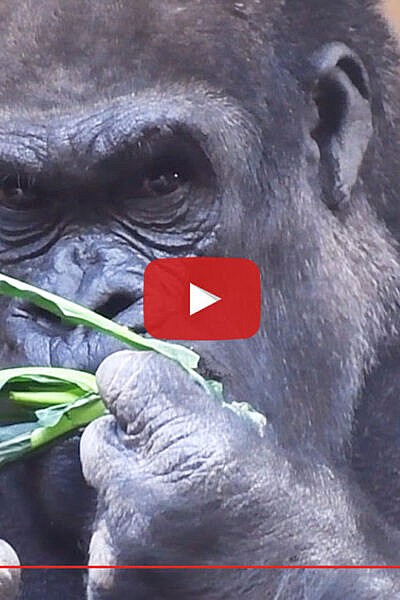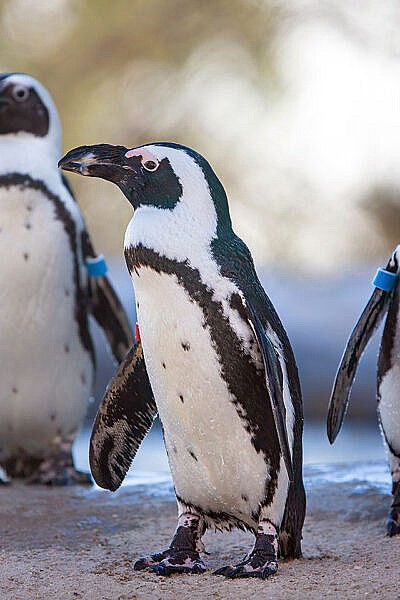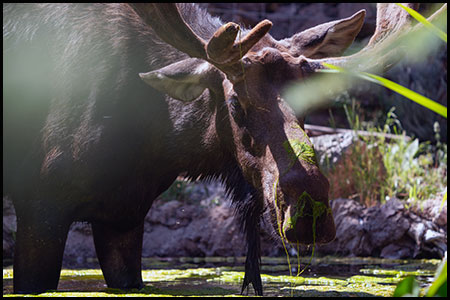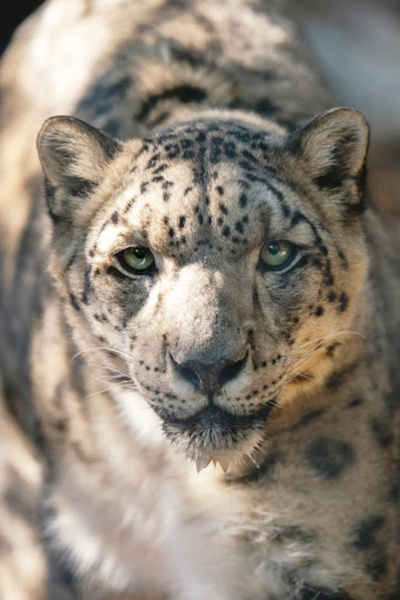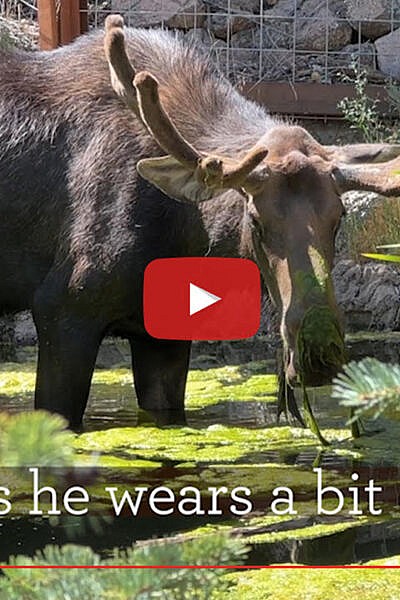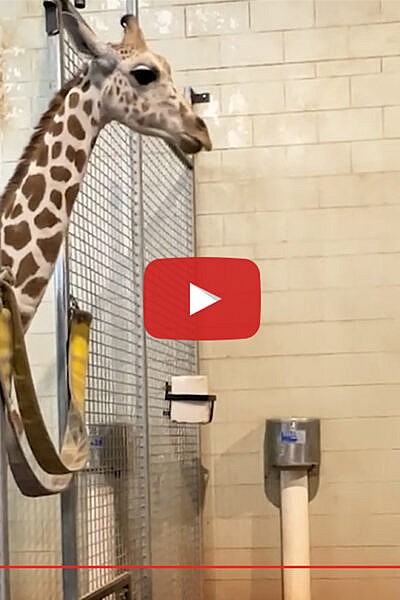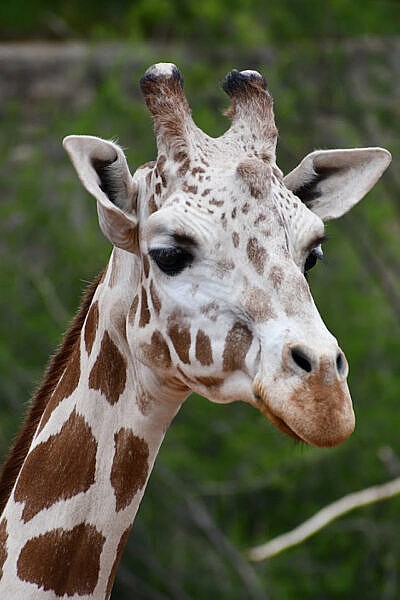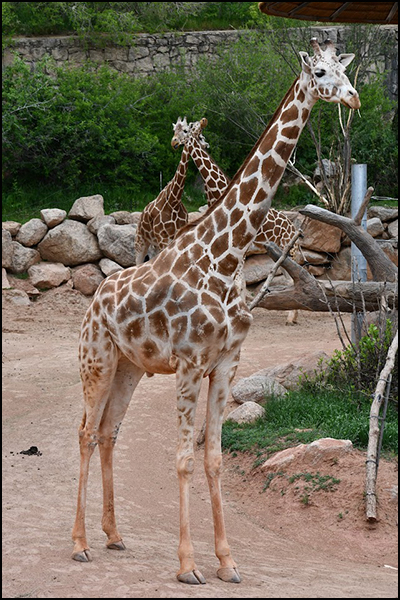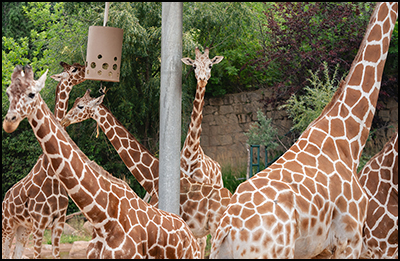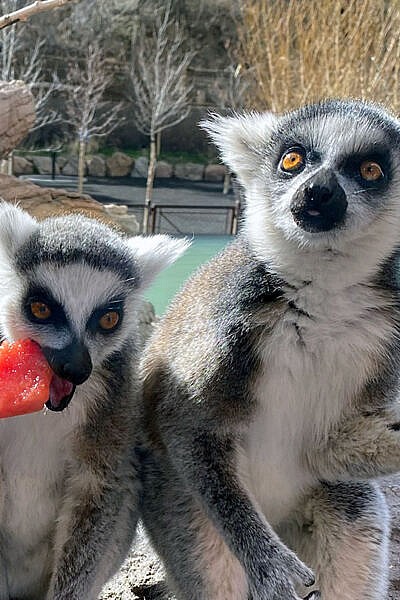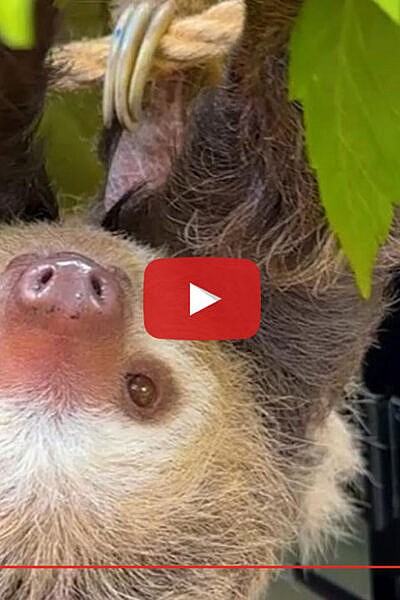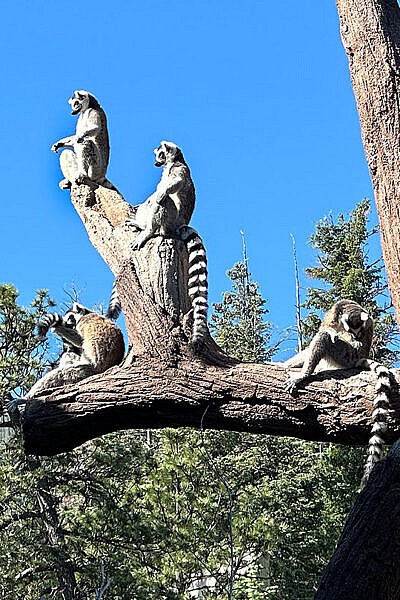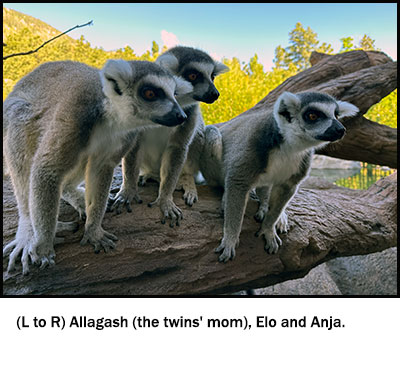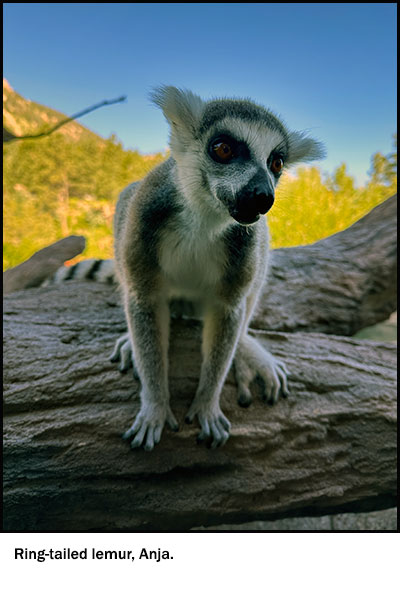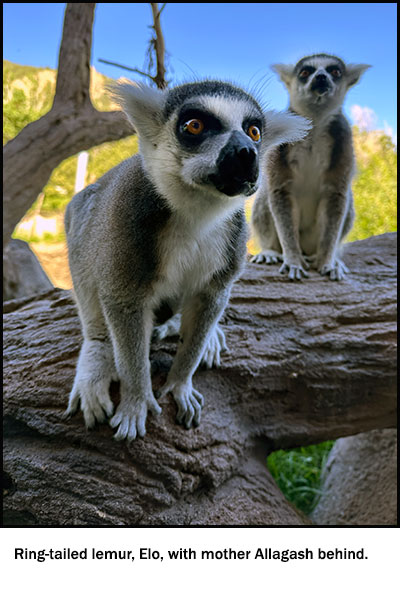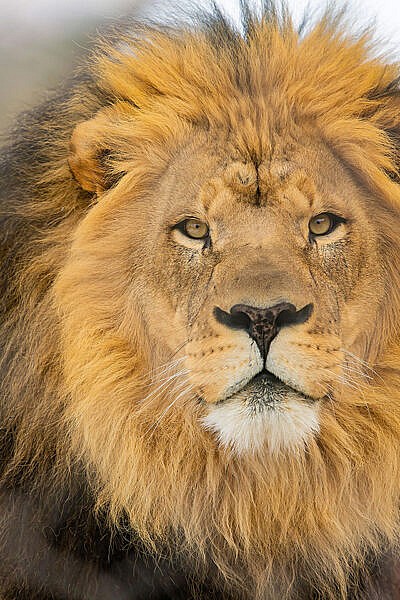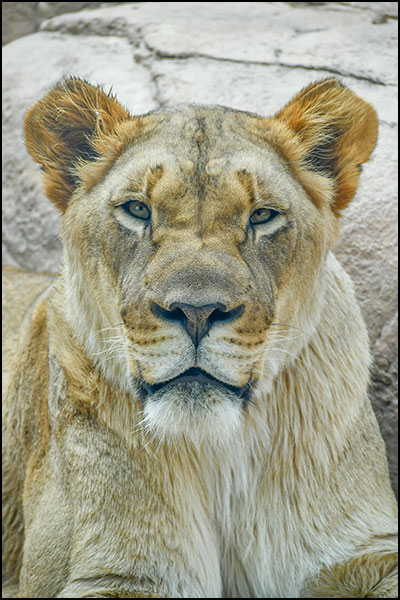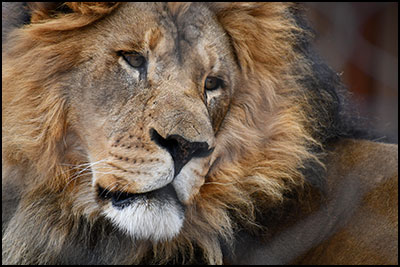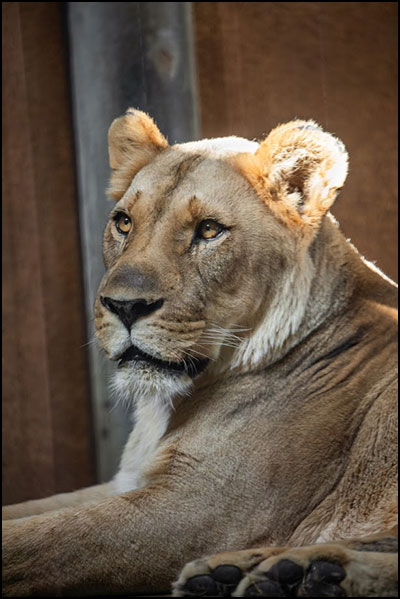A snow leopard’s tail is an incredibly useful tool. About as long as their bodies, their tails act as a counterbalance, so they can make hairpin turns at lightning speed in the wild. When they’re pursuing prey in their native Himalayan Mountains, their tails act like an automatic rudder on a speed boat, instinctively correcting their course as they maneuver left, right, high and low with unbelievable speed and precision.
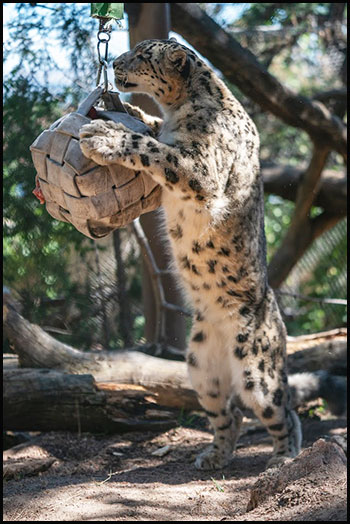
In between hunting excursions, their tails are super-fluffy heat sources that they wrap around their bodies – notably their noses and paws – to help keep them warm in their harsh native high alpine habitats.
Although Bhutan [boo-TAWN], 15-year-old male snow leopard at Cheyenne Mountain Zoo, isn’t traversing snowy mountains in search of dwindling food sources, or battling blizzards for a good night’s rest, his tail is still vital to his well-being.
“Especially for an older cat, he’s an agile climber and leaper,” said Jessi DiCola, Asian Highlands keeper. “His tail weighs about 10 pounds, so it’s fluffy, but it’s also really muscular. I think his tail has a lot to do with how well he can balance and interact with enrichment.”
It might be hard to tell from the fierce-and-bouncy disposition of 75-pound Bhutan, known as “Boots” by his keepers, but he has reached a distinguished age for a big cat. The median life expectancy of snow leopards in human care, according to the Association of Zoos and Aquariums, is 15.
As if Bhutan’s tail wasn’t already impressive enough, it recently helped his care team discover an age-related issue: kidney disease. Unfortunately, it’s quite common in older big cats (and domestic cats, too).
Because Bhutan was previously trained to participate in annual voluntary blood draws from his tail, his keepers and CMZoo’s veterinary team are hopeful they caught his kidney disease early in its progression.
How do you draw blood from a fully awake snow leopard? By asking him to let you hold his tail, of course.
To safely access his tail and to ensure Bhutan knows he is in control of his choices, Bhutan’s care team asks him to come into a special mesh training tunnel for blood draw sessions. The tunnel remains open, so Bhutan can walk away if he decides he’s finished with that training session.

One keeper sits at the very end of the tunnel, where Bhutan knows to position his rear end near the mesh between him and his keeper. As he’s facing forwards, another keeper sits on the other side of the mesh to his left, so she can communicate to Bhutan and reward Bhutan as the training progresses. The two keepers focus intently on Bhutan’s behavior, which is how he communicates his level of comfort throughout training.
Once Bhutan’s giant fluffy tail is in the right spot in the tunnel, his keeper opens a sliding port at the bottom of the mesh that allows him to safely swing his tail out to his keeper’s hands. (You can see Abuto doing a similar training in this video: https://www.youtube.com/watch?v=ddEcGMCZFDA).
“Boots is a total pro at blood draws,” said DiCola. “We’re watching for subtle signs, like a lip curl or tail flick, that tell us he’s close to getting uncomfortable. If we see that, we’ll pause immediately – before he gets uncomfortable – and wait until he shows us he’s ready again, or we’ll stop and try again later. The more we practice, the more comfortable all of us are.”
Bhutan’s kidney levels are elevated, but they’re not extreme at this point. There’s no cure for this kidney disease, unfortunately, so Bhutan’s team must focus on stopping it from getting worse for as long as they can. What they’ve learned from caring for Lomela and Abuto, African lions, is that managing blood pressure is key to slowing the progression of kidney disease.
“We know kidney disease is common in aging cats, and we have successfully monitored and addressed the same issues in our aging African lions for many years now,” said Dr. Eric Klaphake, head veterinarian at CMZoo. “We have been able to give Abuto and Lomela a good quality of life for longer than we might have thought. We hope that what we’ve learned from caring for them will also benefit Bhutan.”
Kidneys are the body’s filtration system. Blood moves through kidneys to be cleaned, and if blood pressure is high, it damages the kidneys as it moves through. Imagine how a trickle of water feels against your skin versus water coming from a high-pressure hose.
Because Bhutan was already well-versed in blood draw training with his tail, blood pressure training – also using the vein in his tail – was a breeze for the spotted scholar. Keepers followed a lot of the same steps to get him in the right position in the training tunnel, with his tail at the port, but Bhutan had to get used to a new sensation: a tail squeeze.
To do that, keepers placed a piece of cloth on the ground and positions Bhutan’s tail on top of it. Once he shows them he’s comfortable, they wrap the piece of cloth around his tail and pause to monitor his level of comfort. If he’s ready to continue, they pull the material more tightly around his tail to resemble the sensation of the blood pressure cuff.
“He has only been working on the blood pressure cuff training for a couple of weeks and he’s already ready for the real thing,” said DiCola. “We’re excited to start getting the real readings, so we have an even better idea of his overall health and what we can do to support him in his golden years.”
For now, Bhutan isn’t on any medications. His care team will increase the frequency of his blood draws to track how his kidney levels might be changing. If his blood pressure is high, his team will address potential changes to his diet or medications to help address it.
CMZoo will provide updates on Bhutan on the Zoo’s social media channels. Next time you’re in Asian Highlands, stop by and wish “Boots” well!
Back to The Waterhole
